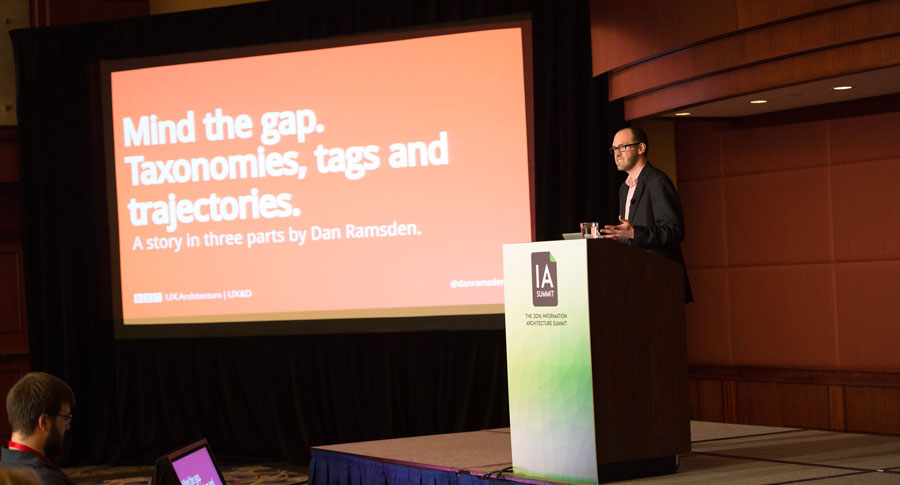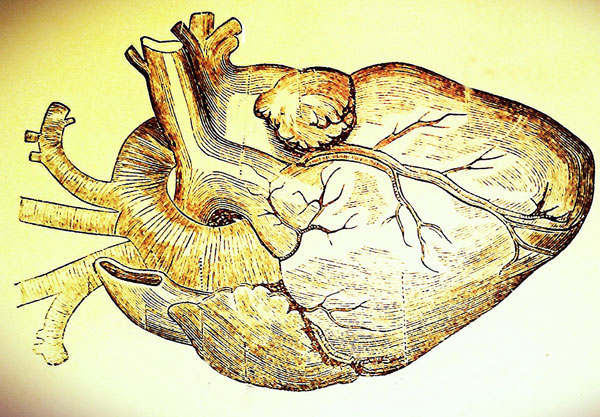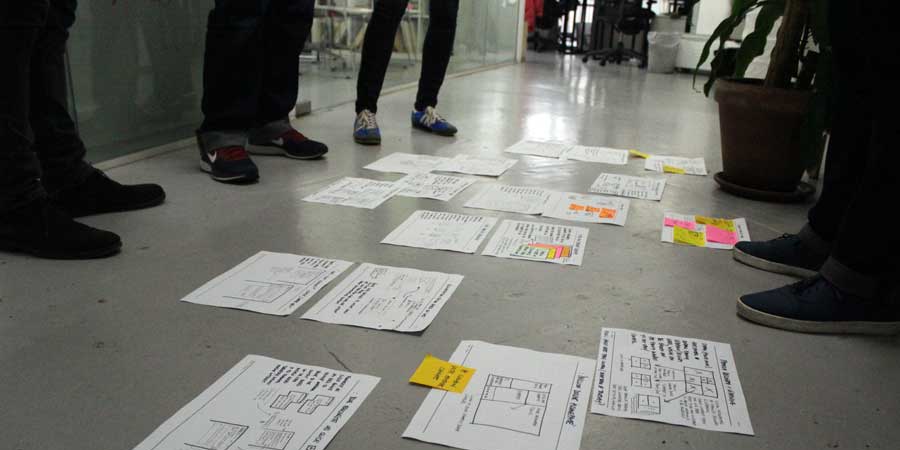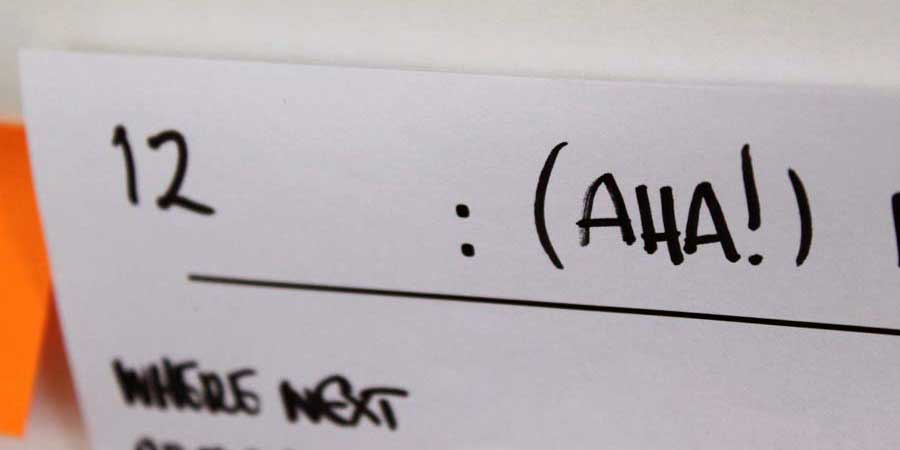-
Space-Time // Experience-architecture

At UX New Zealand Jason Cranford Teague shared some of his thinking on temporal design. Jason argued for an extension of UX practice and design thinking to consider the experience and evolution of designs in time. This is a subject close to my heart. I’ve been talking about Trajectories, time and experience architecture for a…
-
Time, space and information architecture
Information architects create places made out of information, so thinking spatially has always been a big part of what we do. But IA isn’t just about space. IAs should always be thinking about the experiences that their spaces contain. Experiences happen in time. I’ve spent some time thinking about time and space, so that I…
-
Talking about IA at conferences – Most of what we do is invisible

Most of what we do is invisible. A lot of the time I’m manipulating ideas, concepts, data and information, rather than pixels. A lot of the time I’m adjusting and reframing constraints, nudging at assumptions to rearrange them to play more nicely with my ambitions. A lot of the time I’m staring at a spreadsheet.…
-
Mind the gap – Taxonomies, tags and trajectories at the BBC

In this post I talk about the dangers of ignoring gaps, the importance of making the invisible stuff in projects more visible – assumptions, the connections and relationships, the dependencies and possibilities. I also discuss the structures we make and the ways we can understand and explain the experiences they contain.
-
User journeys, Trajectories and Transitions for UX designers

This post is about gaps. I think gaps are where most of the interesting design challenges are lurking, particularly if you’re interested in information architecture. Information architecture is fundamentally interested in gaps — gaps between problems and solutions, between products and audiences, between perfection and pragmatism. Gaps invite us to think about the differences that cause them and…
-
Sitemaps and taxonomic thinking

I used to love a good sitemap, all those boxes and arrows… lovely stuff. But now I’m not so sure. I think it’s good to occasionally take a step back from the bread and butter techniques and deliverables that you rely on and ask a few questions. Sometime I think we come to an old…
-
Everyone makes IA – running a team away day

Before you read this post. Choose a card. Remember it. In December 2014, just before Christmas, the UXA team at the BBC took on the challenge of convincing 120 UX designers that they all make information architecture. IA is a specialism. But it also underpins all user experiences. I wanted to give UX designers the confidence to…
-
IAs are designers too – World IA Day 2014

[fancy_headline]On February 14th 2014 I spoke at World IA Day in Bristol. I talked about how an IA-mindset that can be shared across UX teams and organisations to seed IA-thinking throughout products and services. Rather than focus on the practice and process of IA, I wanted to talk about how IA theory can have an…
-
Design sprints – what I’ve learned at the BBC

As a user experience architect at the BBC I get involved in lots of different types of design projects. This year our team has been experimenting with a way of developing ideas using a method called ‘design sprints’. Inspired by Google Ventures (and described here), we’ve been exploring how we can use this approach to…
-
Trends for 2014 – Storytelling in UX design

After reviewing submissions for IA Summit 2014 it occurred to me that this might be a good opportunity to think about trends for the coming year. This is the final trend, and probably not so much a trend as the way I like to think about the world generally, but it helps out at work too.…
-
Trends for 2014 – Everyone is a designer, everything can be designed

After reviewing submissions for IA Summit 2014 it occurred to me that this might be a good opportunity to think about trends for the coming year. I went back over the feedback I’d given and grabbed some of the sentences that seemed to make more general points about a trend or an insight that is worth…
-
Trends for 2014 – Being ambitious

Another tip for 2014 – being ambitious. IA is the safety rail to keep people going in the right direction. But there is a higher task that IA is capable of supporting, it’s not just keeping people moving in the right direction, it’s keeping people moving.
-
Trends for 2014 – Search is the norm

After reviewing submissions for IA Summit 2014 it occurred to me that this might be a good opportunity to think about trends. IA summit is where some of the best minds in IA gather, so the proposals for talks and workshops should represent some dominant themes and concerns. Right? I went back over the feedback…
-
Motivation and need in experience design

The shape of experiences are defined by the time and spaces they occupy, and even Doctor Who knows that moving through time and space requires energy. But real people don’t have two hearts and a TARDIS to push them forward through the space and time of the experiences we design. Real people are either pushed…